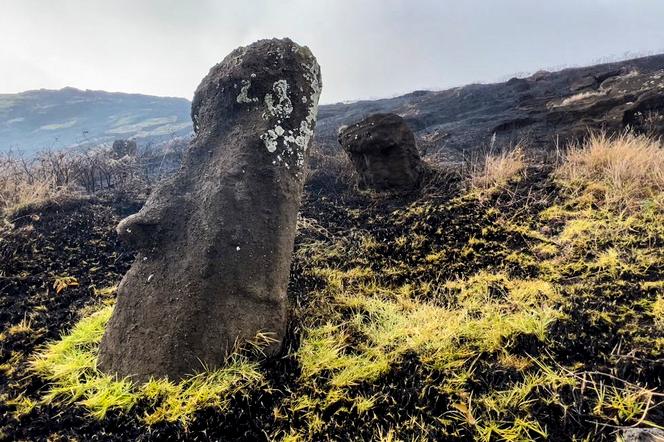


"Here are my moai!" Vaihere Tuki Haoa walked toward a mound of volcanic stone overlooking the ocean. On the southeastern tip of Easter Island, two sleeping giants lie on the ground, their broad chests and impassive faces staring at the sky. "They were sculpted by my ancestors, from the Ngaruti clan. This site is my family's living memory," explained the emotional 43-year-old local guide.
However, the two huge statues on Ahu One Makihi (a ceremonial platform) look very different. One has a fair complexion and a pointed nose, with a perfectly defined face, forehead and eye sockets. The other, dark, eroded and decomposed, has barely discernible features, increasingly resembling a large stone. "My moai has been abandoned. It's slowly disappearing," said Haoa.
For the guide, there's no doubt: Ahu One Makihi is far from an isolated case. On Easter Island (Rapa Nui in Polynesian), the moai are visibly deteriorating, with some experts warning that these majestic stone statues could turn to sand within a few decades. This would be a cultural and economic catastrophe for this small Chilean territory home to 7,700 people.
Located 3,500 kilometers off the coast of South America, the world's most isolated haven is difficult to access. Rapa Nui, with its bare grasslands scattered with wild horses, chain of extinct volcanoes and crumbling black cliffs, emerges after a five-hour flight over the Pacific Ocean from Santiago. The tiny rock at the end of the world, lost in the vast blue ocean and steeped in fantasy and mystery, continues to captivate the imagination.
Pedro Edmunds Paoa, the 63-year-old mayor of the town of Rapa Nui, is well aware of the situation. Having spent half of his years in office, he enjoys sharing with visitors the long history of his little island, starting with the arrival of the mythical first king, Hotu Matu'a. Despite the adverse currents, Hotu Matu'a and his court are said to have arrived on a double-hulled pirogue from the distant Marquesas Islands 800 to 1,200 years ago. It's a story which, he said, deeply fascinated former French president Jacques Chirac, a lover of primitive art. "He dreamed of visiting Rapa Nui," recalled Paoa.
However, when discussing the moai, the mayor's tone became more somber. The island boasts some 1,000 of these stone statues – some standing, others lying on the ground and some even half-buried. The largest can measure up to 21 meters in height and weigh 270 metric tons. But these giants have feet of clay: "Most of them were made from tuff extracted from the Rano Raraku volcano [in the southeast of the island]," explained Paoa. A soft stone, easy to carve, but extremely fragile and porous. "They are completely exposed to wind, saltwater, rain, and sun. The moai are constantly at risk and deteriorate year after year," warned the mayor.
You have 74.84% of this article left to read. The rest is for subscribers only.
